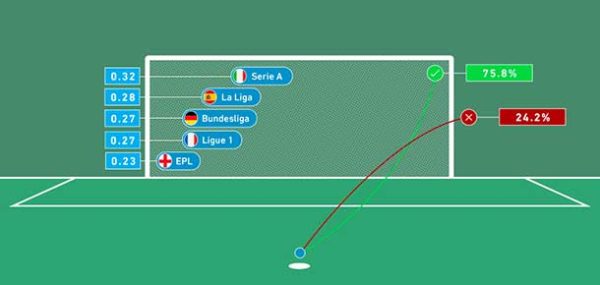Betting Bankroll Management Systems and Advices
It’s possible to beat the bookie while betting on sports by carefully analyzing the teams and players, shopping for attractive lines and taking advantage of promotions. No matter how good you are at these tasks, however, there’s one element that could destroy all your plans if you ignore it: bankroll management. Even if you think you have a huge edge, it’s vital to act carefully with your bankroll and to conserve it so that you don’t put yourself out of action.
There’s perhaps no gambling story more common than that of an individual who makes a big score and then throws it away through inadvisable wagers. With the right bankroll management strategies, you can prevent this from happening to you. Whether you have $100 to bet with or $100,000, its critical that you deploy your resources in an intelligent way to avoid losing them all.

Bankroll Management Overview
Bankroll management consists of a set of rules about how much you’re willing to put at risk on any single wager. By placing only a small portion of your funds on the line at any given time, you can guard yourself against squandering your money. Even the most adept sports bettor doesn’t always win, so steering clear of overlarge bet sizes, which could sink you after just a few losses is sensible.
Before proceeding any further, we are ought to explain exactly how we define a bankroll. Simply put, your bankroll is the total sum of money you have dedicated to wagering. You should choose the size of your bankroll carefully to allow yourself to make as many bets as you want without compromising your day-to-day financial health.
Your bankroll is more than just the sums you have in your account balances at various sportsbooks. If your online balances add up to $1,000, and you have a further $1,000 set aside that you’re ready to deposit at a moment’s notice, then your total bankroll is really $2,000. Keeping your bankroll apart from your regular bank balances and savings is key to success in the realm of betting on sports. Remaining disciplined in this area will aid you in better record-keeping and empower you to resist the temptation of risking money you can’t afford to lose.
Setting up Basic Betting Units
After assessing the size of your bankroll, you’ll need to determine how much of it to bet at any given time, which will be your basic betting unit. We advise selecting a betting unit that’s between 1 and 5 percent of your bankroll. In most cases, values below 2 percent are best although more experienced or aggressive bettors may wish to stay closer to 5 percent. If your entire bankroll is $1,000, then your betting unit will be between $10 and $50: probably under $20 but with the possibility of opting for a higher number if you like taking chances and know what you’re doing.
Fixed Staking Options (Flat stakes)
Fixed staking plans are the best for beginners. With most fixed staking programs, you just need to size your wagers to be equal to your betting unit. There are two approaches to this. The first, called level staking, is to calculate your betting unit a single time and then make all your bets match this amount. The second strategy, known as percentage staking, is to recalculate your betting unit after the settlement of each bet so that you can fine-tune your bet sizes according to the ever-changing health of your bankroll.
Let’s say you have a bankroll of $500 and a basic betting unit of $10, 2 percent of your total. After losing a $10 bet, you’ll only have $490 remaining. With level staking, you’ll just keep betting $10 on your future wagers. Under a percentage staking plan, however, you’ll do the math and arrive at a new figure for 2 percent of your bankroll: $9.80. You’ll then place your next wager for $9.80. As you can see, the first method is easier to use, but the second allows for more accurate control and a much reduced risk of going bust.
Variable Staking Methods (1-10 units staking)
When you’ve accumulated enough experience in the world of sportsbetting, you may wish to consider variable staking plans. This means you’ll be making wagers of different sizes depending on the characteristics of each betting opportunity. You’ll still express the size of your bets in terms of your basic betting unit, but there will be some flexibility. For instance, your bets may range from half a betting unit to two betting units.
These variable staking arrangements rely on the bettor to evaluate many factors before determining how much to bet. If you’re clearing a bonus, receiving loss-back insurance or otherwise benefiting from free money when placing a wager, then you can place a bet near the higher end of your range. Similarly, if you find a particularly appealing line or a profitable opportunity on a heavy favorite, making a larger-than-normal bet is called for. You will most likely want to take smaller risks if you’re betting on a longshot or aren’t especially confident with the side you’ve chosen.
The Kelly Criterion
The procedures we’ve outlined above are appropriate for the vast majority of bettors who wish to promote the growth of their bankrolls without taking unnecessary gambles. However, they’re pretty simplistic and don’t really employ the power of mathematics to the fullest extent available.
Many advanced bettors use a formula called the Kelly criterion to meticulously tailor their bet sizes for each wager based upon the specifics of that particular wager. The Kelly betting formula was developed by J. L. Kelly, a scientist at Bell Labs, way back in the ’50s, and it has since found applications not just in the realm of wagering but also in mainstream investing and portfolio management.
More on Kelly Criterion.
Implement Smart Bankroll Management Today
Adhering to solid bankroll management principles will let you ride out the inevitable downswings that you’ll face as a serious sports bettor. It will also add some structure to your betting decisions by automatically generating reasonable bet sizes instead of you having to choose them on an ad hoc basis. Sharp, professional bettors understand the value of proper bankroll management, and it’s about time to put it to work for you too.
Free tips, odds, the best tipsters and advices. Join us and be part of The StakeHunters Community!




